Zirconia implants – an alternative
Oral surgeon Vaidas Varinauskas argues that there are significant benefits in using zirconia implants as opposed to titanium
Teeth implantation and prosthetic restoration on implants have been lately more and more acceptable by patients as a standard treatment method to restore a reduced chewing function, which significantly influences their life quality. In more complicated clinical situations, long-term successful outcomes can be planned with modern regeneration and dental implantation systems of hard and/or soft dental segment tissues.
Since the discoveries of Professor Per-Ingvar Brånemark, the father of osseointegration, titanium implants have been routinely used for lost teeth replacement due to its well-documented biocompatibility and suitability for tooling. This material has been used for about 50 years as implant substrate with very high success rates. However, such implants can corrode and degrade, thereby releasing ions. Titanium allergy is barely recognised in mainstream medicine. About four per cent of all patients tested will be allergic to titanium1.
For those affected by titanium allergy, the symptoms can range from simple skin rashes to muscle pain and fatigue. Like all metals, titanium releases particles through corrosion. These metals become ions in the body and bind to body proteins. For those who react, the body’s immune system will attack this structure. This starts a chain reaction which can lead to many symptoms including chronic fatigue syndrome. Patients and dentists do not want to accept this and are looking for an alternative.
One possible alternative to titanium is zirconia, one of the tooth-colored materials. Zirconia became an attractive alternative material in dentistry because of its high aesthetic potential and comparable strength to traditional metals. Zirconia possesses superior mechanical properties such as higher tensile strength, compressive strength and modulus of elasticity when compared to pure titanium. Zirconium is a chemical element with atomic number 40, in the periodic chart it is located next to titanium and their properties are very similar. It is a hard metal, resistant to corrosion and similar to steel. It does not exist in nature in the pure state. It can be obtained through complex physico-chemical process.
Zirconia has proven its utility in dental implants through a series of animal and human clinical studies2 wherein it has been shown to successfully osseointegrate into bone and be highly biocompatible3. Zirconia implants have been available on the commercial market since 2001. The current major manufacturers are Zirkolith by ZSystems (Swiss), CeraRoot (Spain), Straumann (Swiss) and Bredent (Germany).
A zirconia dental implant has the colour of a natural tooth so does not shimmer through in the cases of thin or recessed gums. This allows patients to have a natural-looking and aesthetically-pleasing outcome. Zirconia is a biocompatible material that is resistant to chemical corrosion, nor will it conduct electricity or heat. As a bioinert material, it will never trigger chemical reactions, migrate to other sites in the body or interfere with the maintenance of optimal oral health. Since zirconia implants are bioinert, they’re a perfect tooth replacement solution for patients who adhere to holistic health principles.
- Fig 1 – Before and after X-rays showing zirconia implant in situ
- Fig 2 – Single zirconia implant placement
- Fig 3 – Before and after X-rays and intra-oral photograph
- Fig 4 – Before and after X-rays showing zirconia implants in situ
Indications:
- All aesthetic zone cases, especially in thin biotype gingival cases
- Patients with metal allergies and chronic diseases resulting from them and as an alternative to titanium implants in any intraoral location
- Single tooth replacement in cases of high smile-line
- Single tooth replacement in back teeth region
- Immediate implantation after tooth extraction
- Multiple missing teeth replacement
- All-on-4 technique (whole dental arch restoration on four dental implants) for top and/or lower jaw
- All-on-3 technique (whole dental arch restoration on three dental implants) for top jaw only
- Implants for the fixation of full or partial denture.
Contraindications:
- Patients that exhibit a lack of compliance to post-surgical instructions
- A lack of operator clinical and technical knowledge about implant surgery and prosthetic restorations
- Any other general contraindications to implant rehabilitation such as bruxism.
At this moment we have two concepts of zirconia implants – one-piece and two-piece implants with zirconia abutments.
Main aspects of one-piece (mono-block) tissue level zirconia implant
The one-piece tooth implant was conceived in an attempt to copy nature – tooth as a solid crown-root unit. The one-piece implant has no micro gap between implant and abutment, no loosening of fixation screw. Eliminating the micro gap between the implant body and abutment eliminates the possibility of bacterial attachment and inflammation. Without a micro gap, there is less long-term soft tissue irritation. The solid implant allows axial forces to be applied into a solid structure without attachments. Correct implant positioning at the time of implantation is critical to the success of the restoration and aesthetics of the final crown.
Whereas a two-piece implant system can compensate for implant body positioning by using angled abutments, one-piece implants have limited compensation ability. Only around 20 degrees of correction through preparation of the abutment can be applied. It can be done intra-orally, as ceramics do not conduct heat like metal or natural tooth structure – maximum bur speed of ı60,000 rpm with a minimum of 50 ml/min of irrigation.
Several factors must be taken into consideration when planning for one-piece zirconia implant cases. The total number of implants, diameter, length and position should all be based on the available space, quantity and quality of bone. The shortest available one-piece zirconia implant is 8 mm. Bone grafting procedures should be undertaken when necessary to achieve minimum height of supportive alveolar bone. All zirconia one-piece implants should be surrounded by 1.5 mm of bone, with 3 mm of bone between two implants.
In one-piece implant cases, for faster, easier and precise prosthetic work, companies have created impression copings made of zirconia that can be used as a pick-up impression using a closed-tray impression technique. These are zirconia cores perfectly adjusted, for ceramic layering technique or over-pressing.
For one-piece implants, the restorative margin is at gum level and therefore more easy to maintain and keep clean. Significantly less plaque forms on zirconium surface. This reduces the risk of peri-implantitis, cardiovascular disease and stroke.
Locator and ball-attachment monoblock one-piece zirconia implants are intended for surgical implantation on edentulous upper and lower jaws to attach full prostheses in order to replace all missing teeth. On-four locator implants can attach full denture in the maxilla/mandible and only two ball-attachment implants in the lower jaw.
Main aspects of two-piece zirconia implants
These are two-piece glued tissue level implants and screw-retained bone level implants.
Only time will tell if they are better then one-piece implants. At this moment we only have a few clinical studies4, 5 and longer monitoring is necessary to demonstrate durability
Conclusions
Zirconia was introduced into dentistry in the 1990s because of its excellent mechanical and chemical properties as a material for frameworks, abutments, implants, and orthodontic brackets. Clinical studies published to date indicate that zirconia is well tolerated and sufficiently resistant.
A number of studies have been done to compare the osseointegration of zirconia implants with that of titanium implants and conclusions are that there is no significant difference between the osseointegration of zirconia implants and that of titanium implants.
In my opinion, zirconia-based implants provide a very useful alternative to titanium implants.
About the author
Dr Vaidas Varinauskas, PhD is a registered oral surgery specialist with the Irish Dental Council.
He is member of the Irish Association of Oral Surgery (IAOS) and a member of the International Team for Implantology (ITI).
He often shares his experience, lecturing and presenting courses in various conferences and seminars. He is author and co-author of 13 articles in refereed scientific journals related to teeth implants and oral surgery.
In October 2014, Vaidas was rewarded with PhD degree at Lithuanian Health Science University for defending his theses on Functional study of overloading of symmetrical dental implants and fixed full-arch restoration in edentulous jaw case by finite element method.
He accepts cases of minor oral surgery, dental implantation with metal-free 100 per cent ceramic dental implants, guided jaw-bone regeneration (3-D bone block augmentation) and recessions around teeth and implants covering with soft tissue grafts.
References
1. Valentine-Thon E, et al. LTT-MELISA is clinically relevant for detecting and monitoring metal sensitivity. Neuro Endocrinol Lett 2006; 27(Suppl 1):17-24
2. Oliva, Xavi, et al. Osseointegration of Zirconia (Y-TZP) Dental Implants: A Histologic, Histomorphometric and Removal Torque Study in the Hip of Sheep. Int J Oral Implantol Clin Res 2013;4(2):00-00
3. Oliva J., et al. Five-year Success Rate of 831 Consecutively Placed Zirconia Dental Implants in Humans: A Comparison of Three Different Rough Surfaces. Int J Oral & Maxillofac Impl 2010;25(2):336-344
4. Cionca, Norbert, Nada Müller, and Andrea Mombelli. Two piece zirconia implants supporting all ceramic crowns: A prospective clinical study. Clinical oral implants research 26.4 (2015): 413-418.
5. Payer, Michael, et al. All ceramic restoration of zirconia two piece implants–a randomized controlled clinical trial. Clinical oral implants research 26.4 (2015): 371-376.

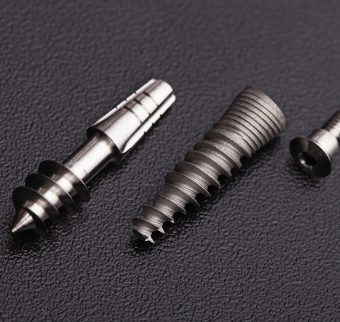
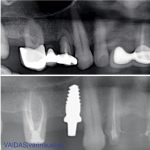
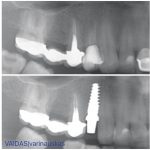
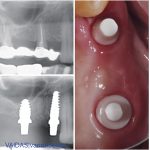
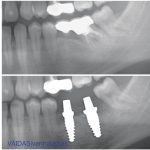
You must be logged in to post a comment.